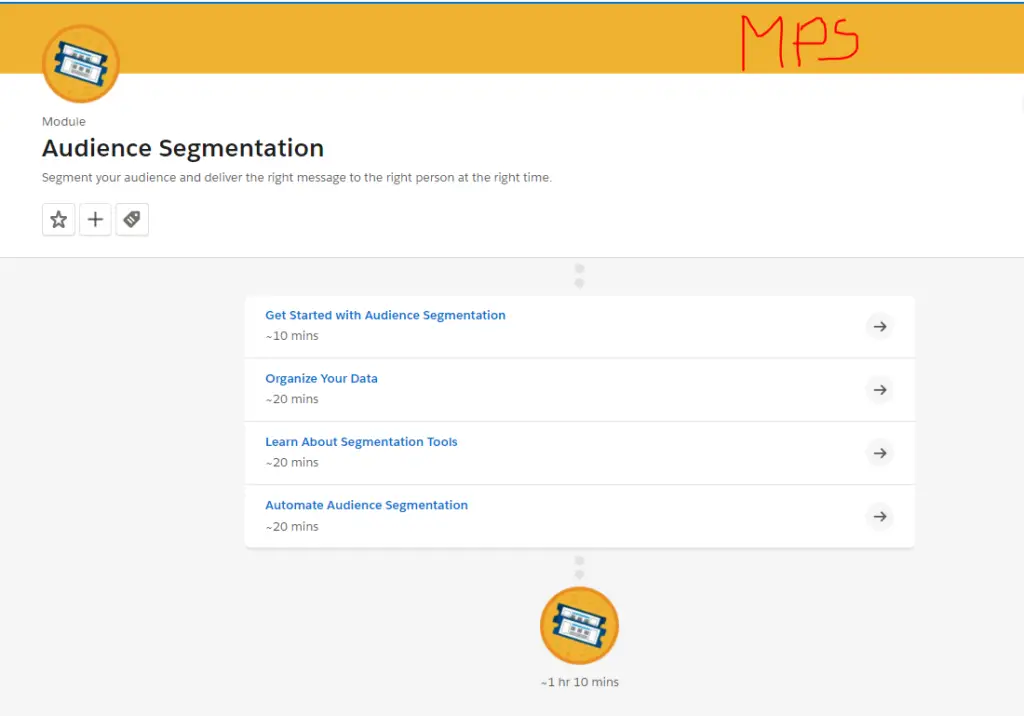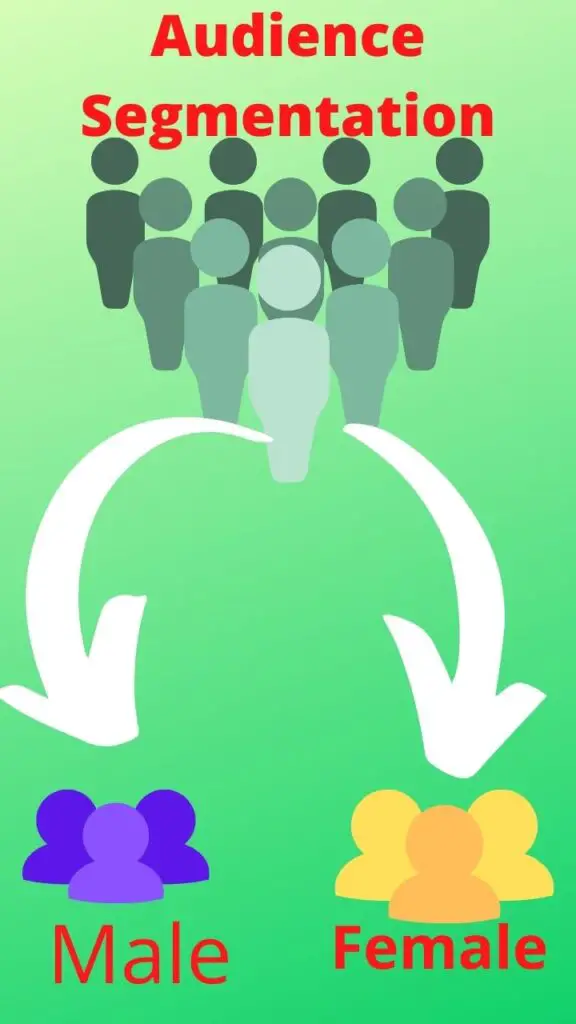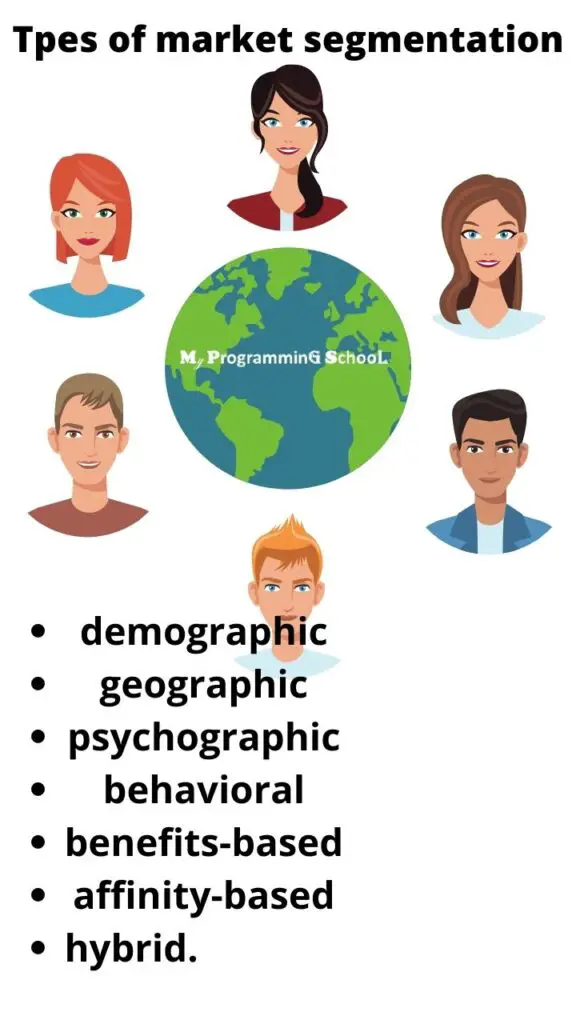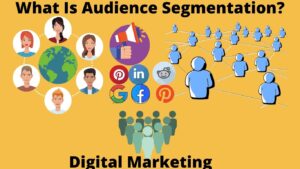In this article, we will learn about audience segmentation strategy, audience segmentation analysis, audience segmentation tools with examples, types of market segmentation, segmentation methods, audience group, content segmentation, digital marketing, etc.

#1.Get Started with Audience Segmentation
Q1)What is audience segmentation?
I)The process of dividing your audience into subgroups to better target them with relevant, timely messaging
II)The process of creating personalized, high-impact content for specific subgroups
III)The process of sharing specific subscriber groups across business units to make your company’s marketing efforts more successful
IV)The process of dividing your audience into subgroups to not overwhelm or burden the system
[bg_collapse view=”button-green” color=”#4a4949″ expand_text=”Show Answers” collapse_text=”Hide Answers” ]
I)The process of dividing your audience into subgroups to better target them with relevant, timely messaging
[/bg_collapse]
Q2)Which of the following are reasons to segment your audience?
I)Higher customer satisfaction rates
II)Faster conversion rates
III)Higher click-through rates
IV)Faster click-through rates
[bg_collapse view=”button-green” color=”#4a4949″ expand_text=”Show Answers” collapse_text=”Hide Answers” ]
III)Higher click-through rates
[/bg_collapse]
Q3)Which of these is a common way for businesses to segment their subscribers?
I)Based on competitor data
II)Based on purchase history
III)Based on anecdotal data
IV)Based on social media profiles
[bg_collapse view=”button-green” color=”#4a4949″ expand_text=”Show Answers” collapse_text=”Hide Answers” ]
II)Based on purchase history
[/bg_collapse]
#2.Organize Your Data
Q1)What is the difference between organizing your data in a list and organizing it in a data extension?
I)In a list, you organize subscribers by name. In a data extension, you organize them by region.
II)You can use a list, but not a data extension, to store sendable subscriber data.
III)A data extension contains relational data, such as purchases. A list doesn’t.
IV)The number of data extensions you can create is limited. The number of lists you can create is not.
[bg_collapse view=”button-green” color=”#4a4949″ expand_text=”Show Answers” collapse_text=”Hide Answers” ]
III)A data extension contains relational data, such as purchases. A list doesn’t.
[/bg_collapse]
Q2)In which of the following cases is it appropriate to use a list as a data model?
I)You require fast import speeds
II)You implement triggered sends
III)You use the SOAP or REST APIs
IV)Your lists contain 500,000 subscribers or fewer
[bg_collapse view=”button-green” color=”#4a4949″ expand_text=”Show Answers” collapse_text=”Hide Answers” ]
IV)Your lists contain 500,000 subscribers or fewer
[/bg_collapse]
Q3)In which of the following cases is it appropriate to use a data extension as a data model?
I)Your lists contain 500,000 subscribers or fewer
II)You require fast import speeds
III)You prefer simplicity over performance
IV)You plan to use a limited number of subscriber attributes
[bg_collapse view=”button-green” color=”#4a4949″ expand_text=”Show Answers” collapse_text=”Hide Answers” ]
II)You require fast import speeds
[/bg_collapse]
Q4)Which of the following activities lets you bring external data into Marketing Cloud?
I)Wait activity
II)Filter activity
III)Data activity
IV)Import activity
V)Connect activity
[bg_collapse view=”button-green” color=”#4a4949″ expand_text=”Show Answers” collapse_text=”Hide Answers” ]
IV)Import activity
[/bg_collapse]
#3.Learn About Segmentation Tools
Q1)What is one benefit of using a data filter over a group to segment lists?
I)Data filters use a simple drag-and-drop builder. Groups do not.
II)You can create a stand-alone filter definition that you can use with one or more lists.
III)Data filters are easier to find than groups in the Email Studio interface.
IV)Data filters have more filtering options than groups do.
[bg_collapse view=”button-green” color=”#4a4949″ expand_text=”Show Answers” collapse_text=”Hide Answers” ]
II)You can create a stand-alone filter definition that you can use with one or more lists.
[/bg_collapse]
Q2)Which segmentation tool lets you request and retrieve data using a special language?
I)Filters
II)Groups
III)Activities
IV)Queries
[bg_collapse view=”button-green” color=”#4a4949″ expand_text=”Show Answers” collapse_text=”Hide Answers” ]
IV)Queries
[/bg_collapse]
Q3)Data filters are located in which Marketing Cloud app?
I)Journey Builder
II)Ad Studio
III)Email Studio
IV)Content Builder
[bg_collapse view=”button-green” color=”#4a4949″ expand_text=”Show Answers” collapse_text=”Hide Answers” ]
III)Email Studio
[/bg_collapse]
#4.Automate Audience Segmentation
Q1)What are two methods for automating segmentation?
I)Group activities and data extension activities
II)Filter activities and query activities
III)List activities and query activities
IV)Filter activities and schedule activities
[bg_collapse view=”button-green” color=”#4a4949″ expand_text=”Show Answers” collapse_text=”Hide Answers” ]
II)Filter activities and query activities
[/bg_collapse]
Q2)In which Marketing Cloud app is the filter activity located?
I)Social Studio
II)Automation Studio
III)Content Builder
IV)Contact Builder
[bg_collapse view=”button-green” color=”#4a4949″ expand_text=”Show Answers” collapse_text=”Hide Answers” ]
II)Automation Studio
[/bg_collapse]
Q3)If you use a filter activity to automate segmentation, what else must you do to fully automate it?
I)Add an import activity
II)Add a run activity
III)Create an automation
IV)Set up an FTP activity
[bg_collapse view=”button-green” color=”#4a4949″ expand_text=”Show Answers” collapse_text=”Hide Answers” ]
III)Create an automation
[/bg_collapse]
People also ask:
audience segmentation in digital marketing
Digital marketing is a method of promoting services or products using digital technologies, primarily on the Internet, but also including mobile phones, display advertising, and any other digital medium.

As a subset of electronic marketing, digital marketing places an emphasis on analyzing data from web traffic and “online actions” (such as clicks on a website or viewing of a video), in order to understand what consumers want.
In contrast to traditional marketing techniques that tend to manipulate consumers into buying a product or service, digital marketing uses focused online marketing strategies to make the consumer take certain actions. These actions can include visiting a website, purchasing a product or service, or signing up for a newsletter. The goal of digital marketing is to reach potential customers through internet-based channels and convince them to purchase products or services.
What is Audience Segmentation?
Audience segmentation is a marketing strategy used by businesses to divide their customers into groups and then target each of those groups individually. This allows you to create content that best suits your audience and speak to them in the way they want to be spoken to. Audience segmentation is one of the most powerful tools at a marketer’s disposal, but it’s also one of the least utilized.
The question you should be asking yourself is “What kind of content would my target audience love?” For example, I work for an SEO company and my target audience are businesses or individuals who want to rank higher in Google.
You can also ask yourself “What kind of content would I love to read?” This is the kind of content you should be creating.
Why is audience segmentation important?
One of the biggest mistakes that marketing teams make is segmenting their audience too thinly. The majority of companies will target every person in their entire potential audience, but that’s a bad strategy. Instead, you should strive to reach the largest amount of people possible within your target demographic.
The reason why is simple: segmenting your audience too much will make it difficult to reach them all with a consistent message. It can also make it difficult to understand what they want and what they don’t want. If you find yourself struggling to meet your goals with this strategy, then consider switching things up.
It’s important to segment your audience in order to figure out who your target audience is and what they want. If you do not segment your audience, you will also be targeting people that aren’t interested in your content.
It’s crucial to make your content appealing and relatable to your audience. If you fail to do this, the chances of them sharing and liking your content are much lower.
What is meant by market segmentation?
When you are running a business, you have to make sure that you are addressing all the needs of your customers. So, making them aware of your products and services is very important. You can do this through different marketing strategies. One of the important strategies is the market segmentation strategy.
To understand market segmentation, let’s take an example from the real world. Let’s say there is a company which is selling perfumes, so they want to market their product in the best way possible. They will do a market study in their own country to understand the market dynamics and then they will.
There are many ways to segment your market. Some common examples include: location, demographics (gender and age), psychographics (lifestyle and personality), behavioral variables (customer’s buying history), life cycle stage (new product introduction), and attitude or need states (product trial).
What are audience segmentation tools?
Audience segmentation tools are used for understanding the audience and for customizing the content for a specific audience. Audience segmentation tools play an important role to understand user behavior, interests, and needs of your audience.
A few well-known segmentation tools are:
- Google Analytics
- Facebook Audience Insights
- AdRoll
- TubeMogul AdWords Editor
- etc.
How do you do audience segmentation?
Audience segmentation is an important but often overlooked step in social media strategy. It’s the process of dividing up existing audiences based on their interests, demographics, behaviors, and attitudes. These segments can then be targeted for social campaigns.
If you want to use audience segmentation in your marketing plan, here are three things to keep in mind.
The first thing is that you need to identify your core audience. This is the group of people who will be most interested in what you have to say and how your product or service can help them. You can’t segment your audience if you don’t know who they are.
The second thing is that you need to understand what motivates your core audience. Why do they buy from you? What are their fears? What are their dreams?
The third thing is that you need to identify the language they use. If you want to connect with your audience, you have to speak their language. This means that you need to understand their language.
What are the 7 types of market segmentation?
Segmentation is one of the most important concepts in market research. It helps you reach more customers and understand them better. This allows you to make more informed decisions, and eventually grow your business faster.

There are seven main types of market segmentation:
- demographic
- geographic
- psychographic
- behavioral
- benefits-based
- affinity-based
- hybrid.
Each type is different, but they all drive the same point home: segmentation helps you gain a better understanding of your customers.
How will you do audience segmentation analysis?
Audience segmentation is the process of analyzing your audience and creating a list of groups based on their common attributes, with the goal of understanding what type of content to create for each group. This process can take some time and effort, but it will allow you to create content that resonates with your audience and drives more traffic to your site.
The first step in audience segmentation analysis is determining which pieces of content already resonate with your audience. If you’re starting out with a new blog, this should be simple. All you need to do is look at the posts that receive the most traffic, and start from there.
But if you’re trying to figure out how to reach an audience that already exists, it can be a little trickier. In this case, the best way to start is by looking at your site.
What is the importance of audience segmentation?
Your audience is unique and so are you, the marketer. Every brand has different needs and expectations from its audience. Segmentation is the process of dividing your audience into smaller groups. It helps you understand the behavior of each group and make better decisions about your content, products, and services.
There are three main reasons for segmenting your audience:
- To understand your target customers better
- To develop content that appeals to a specific group of people
- Communicating with each group in a way they can relate to a segmentation strategy is an important part of a marketing plan.
Segmenting your audience will help you develop content that appeals to them, which in turn helps you build trust and credibility with them.
What are the 10 audience segmentation strategies?
The best marketers know that the fastest way to grow their business is to target specific groups of people who are most likely to be interested in their products and services. Understanding your audience is a crucial part of any strategic marketing plan.
Below, we’ve outlined 10 different ways you can segment your audience for better targeting.
1. Demographics: Who are they? Age, gender, income, education level, family status, etc. The more detailed the profile, the better.
2. Psychographics: What motivates them? How do they feel about issues like climate change and GMOs?What are their hobbies and interests?
3. Behaviors: What do they like to do online? How often do they check email, Facebook, Twitter, etc.?
4. Location: Where are they located? What is the geographic breakdown of your audience?
5. Device: What kind of devices do they use? Are they desktop, mobile, or tablet users?
6. Digital Footprint: What websites do they visit and how often? How about socialmedia?
7. Online Engagement: What do they share online? What do they like to comment on and share?
8. Social Networks: Which social networks are they active on? How often do they post and what kind of content do they share?
9. Content: What kind of content do they like to consume? How often do they watch videos, read blogs, etc.?
10. Demographics: What are their demographics? Are they male or female
What are the 4 segmentation methods?
While creating a marketing strategy, businesses must segment their target audience based on the wants and needs of their clients.
There are four segmentation methods that they can use to do so.
The first method is demographic targeting. This method involves targeting individuals of a specific age range, gender, and socioeconomic status.
The second method is geographic targeting, which involves targeting individuals who live in a certain area. This could be done by zip code, county, or state.
The third method is psychographic targeting, which involves targeting people with similar interests or lifestyles. Psychographic segmentation can be done by personality type, political affiliation, or lifestyle.
The fourth method is behavioral targeting, which involves targeting individuals based on their past behavior. This can be done by using cookies to track a user’s browsing history and then serving ads that are similar to the websites.
What is audience segmentation advertising?
Audience segmentation advertising is a strategy for targeting specific groups of people with your advertisements. It’s really effective and can drive up to a 500% increase in leads and sales.
Audience segmentation advertising breaks your audience into smaller groups, which are much easier to target than the whole audience with one catch-all ad. By going after smaller groups, you can more effectively reach out to the people most likely to buy, by placing your content in front of them more often, at more opportune times.
#Examples of audience segmentation advertising:
• Targeting women in their late 20s to early 30s with a high income and an interest in fashion
• Targeting men above 40 years old with an interest in sports and cars
• Targeting people living in New York with an interest in startups, design and cooking
• Targeting people living in Los Angeles with an interest in fashion, music, and movies
• Targeting people living in San Francisco with an interest in design, technology, and entrepreneurship
Audience segmentation is a form of niche marketing. Niche marketing involves targeting specific groups of consumers.
Which are the ways to segment social media audiences?
Don’t be afraid of segmenting your audience on social media. It is a great way to get a better grasp of how people interact with your content and it’s definitely a good idea if you are trying to attain a specific result.
There are two main methods for segmenting users on social media: demographic and behavioral. Demographic segments allow you to filter your users based on their age, gender, and location. Behavioral segments are more specific and allow you to target users who have visited certain pages or interacted with specific content.
Both methods have their pros and cons, but understanding which method is best for your company can help you make the most of your social media marketing efforts.
Demographic Segments
Demographic segments are useful for broad targeting, but they don’t allow you to be as specific as behavioral targeting. You can use demographic segments to target users based on age, gender, income level, location, and interests.
Demographic targeting is useful for reaching a wide audience with a single ad. For example, if you’re selling a new product, you can target users based on their age and gender.
Behavioral Segments
Behavioral segments are more specific than demographic segments. You can use behavioral targeting to target users based on what they’ve done on your website, what they’ve searched for, and what they’ve purchased.
Behavioral segments are more specific than demographic segments. You can use behavioral targeting to target users based on what they’ve done
What is an audience group?
The difference between a customer and an audience group is that an audience group is a group of customers. That might seem obvious but many companies struggle to understand this and treat their customers as individuals.
The reason behind this is that we’re all so used to marketing in the mass media era, where we blindly throw out messages and hope for them to land on the right ears.
It might surprise you, but the way to get your message across isn’t to cut out the middleman and just shove it down people’s throats, but rather to go through a trusted third party
What is content segmentation?
Content segmentation has become vital to the success of your marketing strategy. Today, people search on Google in a variety of ways, and they expect to find what they’re looking for at the click of a button. If they can’t find it, they move on to the next website.
It is essential that people are able to find exactly what they’re looking for quickly and easily. Content segmentation has become one of the most important parts of creating content for your business.
How do you target a Facebook ad audience?
Facebook allows you to target your audience in a wide variety of ways, from where they live to what they enjoy on the site. You can create multiple ads with different audiences and then compare which one performs better.
One of the most important things to do when targeting an audience is to make sure that you’re targeting the right demographic. If you are running a marketing campaign for a new product aimed at people 18-44, then you don’t want to create an ad that targets people 55+.
To target, the correct age group for this campaign, make sure that you exclude people over 45
Learn More:
- General Course: Blockchain Basics, Bitcoin, Cryptocurrency, Technology
- General Courses: Culture Of Feedback, Types, Benefit, Important
- General Courses: Cyber Resilience
- General Courses: Demo Storytelling
- General Course: Digital Banking Basics-MPS
- General Courses: Demo Delivery Essentials
- General Courses: Google Analytics Basics
- General Courses: Great Management
- Module: Custom Metadata Types Basics
- Module: Apex Metadata API
- Module: Git And GitHub Basics
- Module: Strategies For Big Data Architecture
- Module: Heroku Architecture Designer Certification Maintenance
